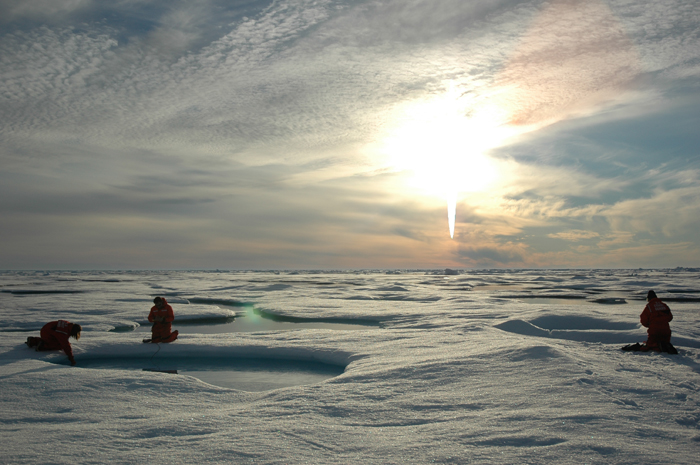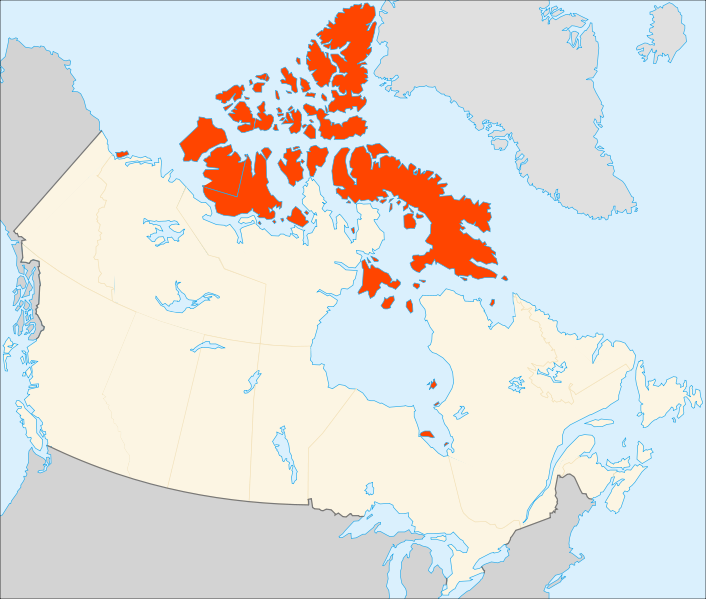Big Melt Expected for Canadian Arctic Glaciers

A fifth of Canada's Arctic Archipelago glaciers may disappear by the end of the century, contributing 1.4 inches (3.5 centimeters) to sea-level rise, new research finds.
For the study, published online Thursday (March 7) in the journal Geophysical Research Letters, scientists used computer models to predict how the glaciers would respond to future climate change. The results were not reassuring.
"Even if we assume that global warming is not happening quite so fast, it is still highly likely that the ice is going to melt at an alarming rate," study leader Jan Lenaerts of Utrecht University said in a statement. "The chances of it growing back are very slim."
Melting ice
Glaciers worldwide are retreating rapidly in the face of climate change. In the Andes of South America, glaciers have lost between 30 percent and 50 percent of their surface area since the late 1970s, according to research published in January in the journal Cryosphere. Himalayan glaciers are losing mass as well.
Meanwhile, summer melts on the Arctic ice sheet have been breaking records, including rates of glacial retreat, according to the National Oceanic and Atmospheric Administration (NOAA). In the new study, Lenaerts and colleagues calibrated a computer model to the last 10 years of melt along the Arctic Archipelago, the scattering of islands that reaches from the top of the Canadian mainland toward the North Pole.
Once the model's melt predictions matched reality when fed old climate data, the researchers used it to predict future glacier melt with various scenarios of continued climate change. In one scenario, global temperatures rise by 5.4 degrees Fahrenheit (3 degrees Celsius). As a result, 20 percent of the archipelago glacier volume vanishes by the end of the century.
Get the world’s most fascinating discoveries delivered straight to your inbox.
This scenario is not out of the realm of possibility. International climate negotiators have pledged to keep global temperatures from rising more than 3.6 degrees F (2 degrees C), but recent climate talks have made only small steps toward reaching that goal.
Once the glaciers are gone, they're unlikely to come back, Lenaerts and his colleagues found. Snow and ice reflect sunlight away from the Earth's surface, but as the snow and ice melt, that reflective protection vanishes, too. The ground will then absorb more sunlight, increasing local temperature. In a 3-degree Celsius warmed world, the temperature around the Canadian ice caps is expected to rise more like 14.4 degrees F (8 degrees C), due to that feedback. [Images of Melt: Earth's Vanishing Ice]
Sea-level rise
If a fifth of the Arctic Archipelago glacial ice melts, the resulting sea-level rise would be 1.4 inches (3.5 cm), the researchers found. It's a significant contribution from an area that doesn't always get much attention in climate discussions.
"Most attention goes out to Greenland and Antarctica, which is understandable, because they are the two largest ice bodies in the world," study researcher Michiel van den Broeke of Utretcht University said in a statement. "However, with this research we want to show that the Canadian ice caps should be included in the calculations."
Follow Stephanie Pappas @sipappas. Follow LiveScience on Twitter @livescience, Facebookor Google+. Original article on LiveScience.com.

Stephanie Pappas is a contributing writer for Live Science, covering topics ranging from geoscience to archaeology to the human brain and behavior. She was previously a senior writer for Live Science but is now a freelancer based in Denver, Colorado, and regularly contributes to Scientific American and The Monitor, the monthly magazine of the American Psychological Association. Stephanie received a bachelor's degree in psychology from the University of South Carolina and a graduate certificate in science communication from the University of California, Santa Cruz.



